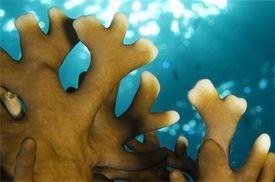Ras Hankorab, a natural paradise in danger
Other areas comparable to this one are rare to find nowadays. Yet, with the Ministry of Tourism wielding constant pressure to use the area of Ras Hankorab for touristic development, it is in danger. This month the coastal survey team recorded one of the highest coral diversity with some fish species observed for the very first time since the beginning of whole project in Ras Hankorab! The orange face butterfly fish, for example, (a corallivore -feeding on coral polyps- butterfly fish) was never recorded in any of the 30+ detailed and 200 quick surveys conducted in the south. In the northern part of Ras Hankorab more than 16 different hard coral and more than 6 soft coral genera were recorded; one of them was an encrusting soft coral species that the team has never seen elsewhere in the study area. This natural paradise hosting all these unique resources is still not protected from tourism development. Ras Hankorab is at the centre of a long-standing debate between the Ministry of Tourism on one side and environmental agencies, both governmental (EEAA) and non-governmental (HEPCA), opposing. The ministry is tempted by luring more investors in the area regardless of its environmental and economic importance, whilst the agencies are fighting to conserve the natural heritage. The striking fact about the issue is that Ras Hankorab is already located within the Wadi El-Gemal national park! This raises another question though: what is the point of declaring national parks if other governmental organizations will not respect their value? Areas of extraordinary landscapes and high density of species, ecosystem and genetic diversity like Ras Hankorab should be dealt with as national treasures. The increasing unregulated development happening on the southern coast of the Red Sea is very alarming. The unsustainable -even destructive- development model we all observed in Hurghada is a live example of what we all shall not allow to happen again in the south. HEPCA is not the only one responsible for the protection and conservation of Egypt’s natural resources: everyone living and visiting the Egyptian Red Sea should share this responsibility. For this reason, once again, we call upon you all to help us monitor the situation, support possible actions we may be promoting in the future and keep your pride and sense of ownership for the astonishing natural beauty of the Red Sea.



